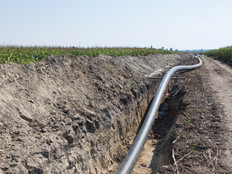Meanwhile, in Phoenix, the city is looking to build on emergency efforts put in place earlier this year to make a more lasting impact on closing the digital divide. The city is starting a public-private partnership with schools, technology companies and other city agencies, according to The Arizona Republic.
Th plan is currently in the pilot phase and will be rolled out soon “to apartment complexes where there are high numbers of students who don’t have internet connections,” the newspaper reports. The aim is to eventually bring expanded access to connectivity to the entire 250-square-mile Phoenix Union High School District. Students in all districts in Phoenix would eventually be connected to their schools.
Christine Mackay, director of the city’s community and economic development department, says the goal is to close the digital divide, give workforce training to residents to maintain new wireless infrastructure and help students prepare for jobs in the new economy, the newspaper reports.
“Those students are our workforce of the future … we really succeeded in changing Phoenix into this high-performing, moving economy and we don’t want to go back to the time of low-end call centers as our primary source of economic development,” she said during an October meeting.
In Cuyahoga County, Ohio, home to Cleveland, the county in late November issued a request for information for projects and partnerships to help close the digital divide.
Specifically, the county is seeking to identify “ready-to-deploy ideas or projects” for expanded access to broadband that range from “new products and pricing, new service options with discounted rates, free Wi-Fi solutions that residents can reach from their homes, or other innovative approaches employing established or emerging technologies.”
“While a lack of internet connectivity can be seen in all areas of the County, the County recognizes there are specific cities and neighborhoods where a lack of an internet connection is concentrated,” the request reads. “The goal of this RFI is to identify solutions for all County residents, therefore proposed solutions must address underserved areas and avoid ‘cherry picking,’ or building only to the most affluent areas of the County. If possible, the network should also address problems with service and cost in areas that are currently served.”
MORE FROM STATETCH: Find out how governments and schools are partnering on closing the digital divide.
Cisco Partners with Michigan School Districts
Another project to close the digital divide is getting underway in southeastern Michigan. Cisco Systems is partnering with Merit Network’s Michigan Moonshot initiative to provide Wi-Fi hotspots that will extend connectivity outside of schools and public libraries, with 50 sites identified. The goal is to allow students and parents to access the networks in cars and in a socially distant manner during the pandemic.
According to data from the U.S. Census Bureau cited by Cisco, Detroit’s public schools have the highes number of households in Michigan without internet access, at 82,894, and the Flint City School District has the second highest, with 14,221 households without internet access. Fifty-seven percent of K–12 students in the state’s Washtenaw County do not have high speed Wi-Fi access at home.
The project is supported through Cisco’s Country Digital Acceleration program, which works with governments and academic institutions around the world to expand broadband access. Guy Diedrich, a Cisco vice president and global innovation officer for the company, tells StateTech that as governments look to close digital divides around the globe and across the U.S., they need to focus less on turf battles and more on delivering outcomes for those in need.
Local and state governments have a clear role to play, he says, because they are closest to the problem and the people. “The government is uniquely suited as — in the best terms — the servant of the people,” he says. “The people of that community are the direct customers of that government. That isn’t necessarily the case for Cisco or academia.”
Cisco believes that being connected is “a fundamental human right. Period, full stop,” Diedrich says.











